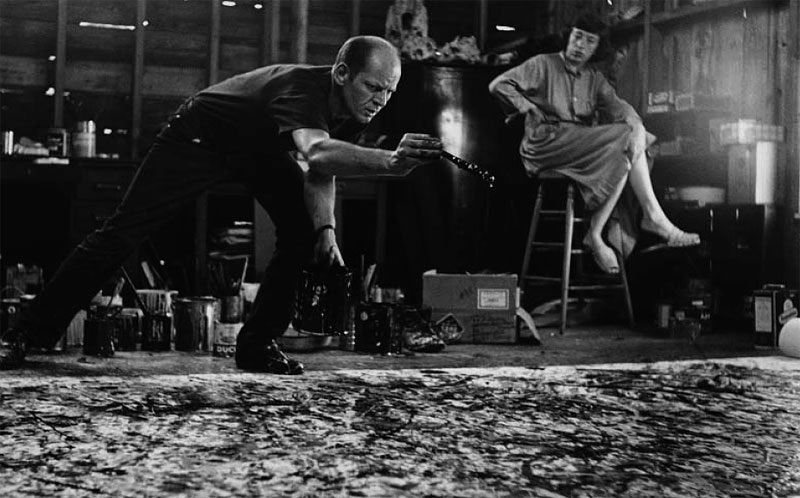It is hard to imagine Jackson Pollock’s work without thinking of Hans Namuth’s documentation of his painting process. Namuth’s photographs and film (Jackson Pollock 51) profoundly influence how we look at and think about Pollock’s work.
This example shows that documentation of how particular marks are made can be every bit as important to our understanding of the work as the finished painting or drawing. In other words Namuth’s photographs and film allow us to consider the significance of the action in ‘action painting’ and its relation to the final canvases that Pollock produced. His documentation might also prompt us to think of Pollock’s canvases themselves as records of the actions of a body in space and, by extension, how the simple technologies involved in marking a surface can be thought of as our first recording devices. In this way we can trace the idea recording back to the first cave paintings. The particular viscosity of the paint that Pollock used allowed him to ‘record’ certain kinds of gestures and actions.
Jackson Pollock 51 is also an example of a film maker grappling with the problem of documenting specific aspects of Pollock’s process. The sequence shot with Pollock painting on one side of a sheet of glass, with the camera mounted below the glass on the other side, is an attempt to show Pollock at work in a way that wasn’t possible with a more conventional camera position.
The example of Namuth and Pollock might prompt the following questions: How important are the actions that go into making your work? What is the best way to document those actions? What can and can’t be communicated with photographic and video documentation of those actions? What are the best angles and ways of setting up the camera for documenting your process?

